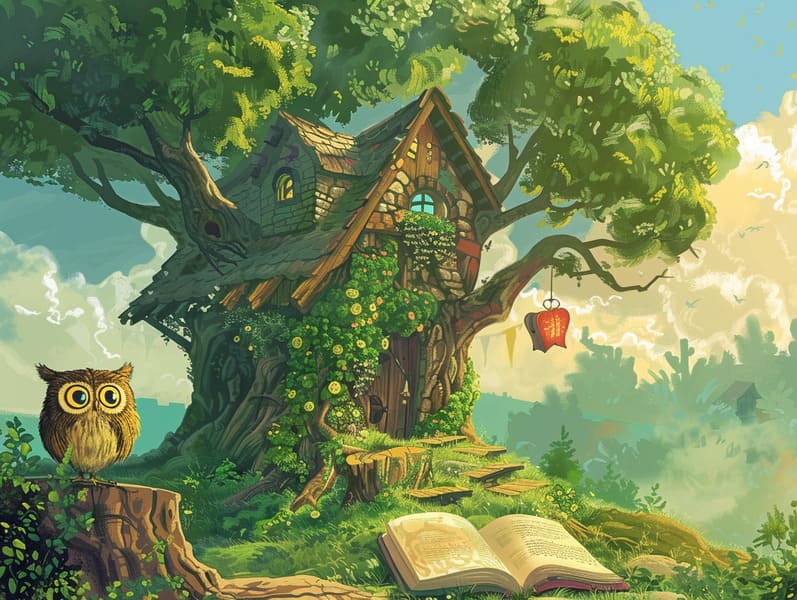
Historical fairy tales have ancient roots. These tales have been spoken from one generation to the next well before they were ever inscribed. They came from a variety of societies, including Middle Eastern traditions. They were initially shared among adults, often carrying themes and messages aligned with the societal norms and beliefs of the time.
The renowned Brothers Grimm, the two Grimm brothers, were among the first to collect many of these beloved fairy tales. Their compilation, "Grimm's Fables," included stories like "The Story of Cinderella," "Hansel and Gretel," and "Little Snow White," which have since become cornerstones in the world of timeless fairy tales. Similarly, Andersen's fanciful fairy tales, such as "The Little Mermaid," and "The Story of the Ugly Duckling," have won hearts worldwide, guaranteeing their place in the pantheon of iconic fairy tales.
Despite their historical roots, these tales remain as pertinent as ever, especially as nighttime stories for kids. These whimsical stories are now available in different formats, including artistically illustrated books, magical animations, and web-based fairy tales.
Their lasting appeal can be attributed to several delightful features:
Crucial Morals: Old fairy tales often provide important moral lessons. Narratives like "The Wolf and the Liar" teach the virtue of truthfulness, while "The Story of the Tortoise and the Hare" emphasize the virtues of determination and unassuming nature. These narratives offer the young clear distinctions between moral and immoral, guiding their moral compass in a gentle yet profound way.
Compassion and Knowledge: Old fairy tales frequently illustrate personalities facing difficulties and adversities, inspiring listeners to sympathize with their struggles and back their triumphs. For instance, "Beauty and the Beast" conveys the importance of looking past the exterior to appreciate the real character of a soul, enhancing understanding and knowledge.
Cultural Appreciation: Many fairy tales are rich in the cultural contexts from which they originated. Discovering these narratives can provide fascinating glimpses into different historical contexts, developing a sense of global respect and respect.
Imagination and Innovation: The supernatural elements in old fairy tales—mythical entities—kindle children’s creativity. These narratives move readers to supernatural realms, revitalizing inventive thinking and a sense of astonishment that endures a lifetime.
Timeless fairy tales are not only fantastical but also pedagogical. They act as mesmerizing tools in building various mind and heart abilities in young readers. When fairy tales are recited, they cultivate verbal skills by teaching new language items and complex sentence structures. This practice also advances listening abilities and attention, as kids listen intently, prepared to see what happens next.
Furthermore, analyzing the themes and characters of ancient fairy tales can improve intellectual skills and critical thinking. The young are guided to find patterns, foresee events, and realize cause and effect. These reflections also advance little ones verbalize their thoughts and feelings, adding to their emotional intelligence.
In today’s modern era, the existence of web-based fairy tales has made these fairy tales more within reach than ever. Digital sites and mobile apps present vast collections of traditional fairy tales that can be read or played anytime, anywhere. Fairy tales told out loud are particularly well-liked, sharing an enjoyable way for kids to savor these alluring stories. Audiobooks and read-out-loud videos move characters and settings to life, often accompanied by delightful background sounds and melodies that enrich the tale experience.
The everlasting appeal of ancient fairy tales lies in their ability to alter to current eras while holding onto their fundamental ideas. Contemporary updates of these fairy tales often present more inclusive figures and modern settings, making them relevant to today’s audience. However, the essential messages of fearlessness, humanity, and fairness remain unchanged, continuing to affect kids of all ages.
Classic fairy tales also offer a sense of assurance and familiarity. They offer a organized narrative with a unmistakable beginning, middle, and end, often wrapping up with the conclusion of conflicts and the triumph of morality over immorality. This dependability can be calming for kids, introducing a sense of unchangeability in an constantly changing world.
Classic fairy tales continue to enthrall and guide new generations, maintaining their splendor and meaningfulness in modern society. As children's bedtime stories, they extend a perfect blend of allure and teaching, advancing moral values, empathy, and creativity. The prevalence of digital fairy tales and the commonness of fairy tales narrated assure that these old fairy tales remain obtainable to new generations.
By protecting and narrating these fairy tales, we continue to cherish the rich tapestry of folklore and cultural heritage. Whether you are perusing a vividly illustrated book, accessing a internet library, or listening through an read-aloud book, the spell of popular fairy tales is always within reach. These fairy tales reveal of the perpetual ability of narratives and its ability to unite us across eras and regions.
Regardless if you are browsing a colorful picture book, viewing a virtual collection, or listening via an narrated book, the charm of traditional fairy tales is always within reach.
These stories reveal of the persistent find it here power of fairy tales and its ability to tie us across centuries and lands, casting a charm that charms and informs alike.
Comments on “The Inception of Legendary Fairy Tales with the Persistent Mystique.”